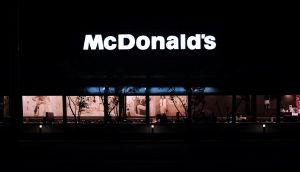Consumers are more interested in maintaining and improving their health than ever before, according to research by Zenith – so why are ad budgets for advertisers in the health field going down?
Zenith’s study, which covered 13 markets including Canada, shows that the field is undergoing numerous transformations and challenges from both the media landscape and changing lifestyle trends. Digital technology is transforming the business models of healthcare operators and prescription medication manufacturers, says Zenith, but it remains difficult and expensive to bring new prescription medicines to market.
Overall, ad spend by healthcare brands will grow by 3.6% this year, reaching US $36 billion. In 2020, there will be another estimated 3.6% growth. But that’s a slower rate than ad spend in general, which is projected to grow by 4.8% in 2019 and 4.3% in 2020 across the same measured markets. The current factor affecting this is rising research cost and persistent downward pressure on prices, which are restricting ad spend by the biggest companies.
Canada is among the numerous markets that does not allow direct-to-consumer advertising of prescription medication, which the U.S. does, and therefore it boasts a lower healthcare spend. In general, though, the mass advertising strategy of the healthcare field.
As of 2018, TV has taken 54.7% of global ad spend from the healthcare field, severely over-indexing against TV’s share of the overall ad market (30.8%). However, trends including what Zenith identifies as “continued media inflation” is pushing healthcare dollars elsewhere. Ad spend on TV fell 3.1% in 2018 and is forecast to decline another 4.6% in 2019 and 5.2% in both 2020 and 2021. This is faster than the overall decline of TV ad spend (which is declining by only about 1% per year).
On the other hand, digital display and OOH are growing in the healthcare fields for mass awareness. While OOH is predicted to account for 4% of healthcare ad spend this year (ranking as what Zenith calls “underused” and comparing to 6.4% for all ad spend), it grew by 11% in 2018 and is forecast to grow 15% this year. Internet advertising already sees far more activity from healthcare brands, accounting for 34% of ad spend in healthcare last year. This represented 16% in growth, and Zenith predicts that it will repeat that growth rate this year. By 2021, Zenith also predicts that online advertising will take the biggest share of ad spend in healthcare, at 46%.
And, in perhaps one of the most surprising moves, newspaper advertising has grown somewhat quickly in this field. It rose by 6% in 2018, and is predicted to reach a total share of 17% by 2021. This is in stark contrast to the 5% annual decline in global newspaper ad spend. However, this is largely driven by the Indian market – excluding India, newspapers’ share of ad spend will be just 1.6% in 2021.
























